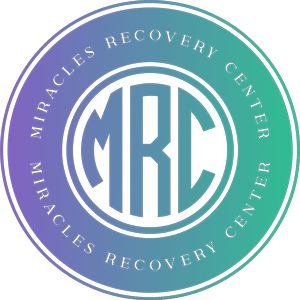
Dialectical Behavior Therapy is an evidence-based treatment that encapsulates a unique approach to mental health treatment, composed of six key components crucial for successful outcomes. What are the six main points of dialectical behavior therapy? These pivotal elements—dialectical thinking, mindfulness, emotion regulation, distress tolerance, interpersonal effectiveness, and validation—create a multi-faceted framework designed to enhance emotional and psychological resilience. Discover the role of each point in DBT and its impact on therapy without delving deep into psychological jargon.
Table of Contents
Key Takeaways
- DBT consists of six main components: Dialectical Thinking, Mindfulness, Emotion Regulation, Distress Tolerance, Interpersonal Effectiveness, and Validation, which together provide a multifaceted approach to improving emotional and psychological well-being.
- Originally developed for treating borderline personality disorder, DBT is now effectively used for a range of mental health conditions, providing individuals with practical skills for emotional management, mindfulness, and relational effectiveness.
- The structure of DBT therapy includes individual sessions, group therapy, and skills training, and finding the right therapist is critical to successful treatment, with options for both in-person and online therapy.
Understanding the Six Key Components of DBT
Dialectical Behavior Therapy (DBT) is a comprehensive cognitive behavioral therapy that integrates six vital components. These elements construct DBT’s foundation, each contributing significantly to personal growth and emotional well-being. But what exactly are these six components?
They include:
- Dialectical Thinking
- Mindfulness
- Emotion Regulation
- Distress Tolerance
- Interpersonal Effectiveness
- Validation
While they may appear as stand-alone concepts, they are interconnected, working together to create a holistic framework for DBT. Now, let’s delve into these components to understand their roles more comprehensively.
Dialectical Thinking
Dialectical thinking, the cornerstone of DBT, promotes a nuanced and adaptable viewpoint. It encourages clients to embrace the idea that seemingly opposing perspectives can coexist, fostering a balanced and cohesive understanding. This principle moves clients away from black-and-white thinking, common in many mental health conditions, towards a more flexible perspective.
The term ‘dialectical’ in the main points of dialectical behavioral therapy (DBT) signifies the fusion of opposites. It essentially involves striking a balance between two extremes, endorsing acceptance and change at the same time. This balance enhances the overall effectiveness of dialectical behavior therapy, allowing clients to accept the reality of their lives and behaviors while continuously striving for positive changes. By understanding the points of dialectical behavior therapy, clients can better navigate the complexities of their emotions and thoughts.
Mindfulness
Mindfulness, another critical component of DBT, revolves around cultivating non-judgmental awareness of one’s thoughts, emotions, and sensations. It’s about being fully present in the current moment, observing internal experiences without becoming overwhelmed by them.
Contrary to other mindfulness practices, DBT accentuates:
- Non-judgmental acceptance and assimilation of concepts such as wise mind, emotional mind, and reasonable mind
- Improved psychological well-being
- Heightened mindfulness
- Support in emotion regulation
- Helping clients manage symptoms related to anxiety, depression, and trauma
This unique approach provides numerous advantages.
Emotion Regulation
Emotion regulation in DBT encompasses techniques that target the comprehension, management, and alteration of emotional reactions. It equips clients with resources to enhance emotional management, a crucial skill for those who struggle to regulate their emotional responses.
Emotional control serves as a strategic approach to effectively manage and modify intense emotions that may lead to challenges in daily functioning. The emotion control skills learned in DBT, like the 24-hour rule, encourage individuals to wait 24 hours before responding to a triggering situation with intense negative emotions, facilitating the reduction of emotional intensity and the emergence of rational thinking.
Distress Tolerance
Distress tolerance in DBT is about learning healthy ways to manage negative emotions and challenging circumstances without resorting to unhealthy behaviors. It emphasizes the importance of healthy habits of enduring distress and cultivating healthier coping mechanisms or coping skills, setting DBT apart from other therapy approaches just like Cognitive behavioral therapy (CBT).
DBT incorporates specific techniques like the IMPROVE technique, TIP skill, and STOP skillset to bolster distress tolerance and self-soothing. These techniques provide individuals with the necessary skills to navigate distress effectively, preventing harmful behaviors, such as self-destructive behaviors, and promoting healthier coping mechanisms.
Interpersonal Effectiveness
Interpersonal effectiveness in DBT refers to acquiring skills for clear and respectful communication of interpersonal conflicts and preserving functional relationships with others. It aims to reduce conflict, manage difficult emotions, and utilize effective communication strategies to promote healthier interactions and relationships.
DBT offers distinct techniques like mutual validation, the THINK skill, and the DEAR MAN skill for effective conflict navigation and resolution within relationships. Not only does this lead to healthier relationships, but it also bolsters self-esteem, confidence, and overall well-being.
Validation
Validation in DBT plays a crucial role in establishing a secure and encouraging atmosphere, ensuring that clients feel acknowledged, comprehended, and esteemed during their therapeutic journey. It recognizes an individual’s emotions and experiences, contributing to the establishment of trust and strengthening the therapeutic alliance.The relationship between the therapist and patient in DBT is central to creating a safe and trusting environment, a vital element for fostering effective communication and collaboration throughout the treatment addiction recovery process. This relationship involves empathy, self-respect, validation, and cooperative work between therapist and client, helping the client feel understood and supported, thus enhancing their motivation to fully engage with the therapy.

DBT’s Role in Treating Mental Health Disorders
This psychotherapy was initially developed to treat patients with borderline personality disorder (BPD). Today, the main points of DBT as a type of therapy have expanded its intervention over time to cater to a broad spectrum of other mental health issues like eating disorders, substance abuse, post-traumatic stress disorder, and conditions, offering a versatile and effective therapeutic approach. DBT’s role in treating mental health disorders goes beyond addressing the symptoms. It empowers clients or clients loved ones with the tools to manage their emotions, improve their relationships, keep healthy boundaries, and ultimately lead more fulfilling lives.
Borderline Personality Disorder
DBT has been proven to be highly effective in treating borderline personality disorder and bipolar disorder, both mental health conditions characterized by impulsive, self-destructive behaviors, intense and highly variable moods, and unstable relationships. The techniques and strategies employed in DBT, such as mindfulness, distress tolerance, emotion regulation, and interpersonal effectiveness, address the core symptoms of these disorders and promote healthier coping mechanisms.
Through DBT, individuals with borderline personality disorder can experience significant reductions in self-harming, suicidal behaviors, suicide attempts, and hospitalizations. Thus, DBT not only helps manage the symptoms of substance use disorder but also enhances the overall quality of life for individuals with this condition.
Other Mental Health Conditions
The effectiveness of DBT isn’t confined to the treatment of borderline personality disorder. It has also demonstrated substantial efficacy in treating borderline personality disorder by managing:
- depression
- PTSD
- substance use disorders
- other mental health conditions
For example, consider Emma, a young woman who struggled with severe depression in her daily life. By engaging in DBT, she acquired strategies to regulate her emotions and navigate challenging circumstances, leading to a notable decrease in her depressive symptoms and bolstering her overall outlook with a sense of hope and resilience.
The skills taught in DBT include:
- Mindfulness Skills
- Distress tolerance skills and coping skills
- Emotion regulation or behavioral skills
- Interpersonal effectiveness
These skills can be advantageous for anyone, especially those encountering intense emotions. They provide individuals with the tools to manage their emotions effectively, thus enhancing their ability to tackle the challenges of everyday life.
The Structure of DBT Therapy
DBT therapy typically blends individual sessions, group and cognitive behavioral therapy, and skills training, providing a systematic and comprehensive approach to treatment. This structure ensures that clients receive personalized attention, have opportunities to practice their skills in a social setting, and learn new strategies to manage their emotions effectively.
Individual Sessions
Individual sessions or individual therapy in DBT are personalized one-on-one meetings that take place on a weekly basis. These sessions offer clients a safe space to address their specific challenges and reinforce the skills learned in group therapy. The primary goals of these group sessions are to assist in reducing suicidal and self-harming behaviors and to aid in creating a fulfilling and meaningful life.
By offering skills training and addressing particular challenges, these individual sessions cater to specific client needs. They are also customized to accommodate specific diagnoses and age groups, ensuring that each client receives the most appropriate and effective treatment.
Group Therapy
Within the DBT framework, group therapy sessions provide individuals with social support, encouragement, and an environment to foster self-esteem and confidence. These sessions provide a nurturing setting for acquiring and honing skills, as well as the chance to receive input and validation from peers.
DBT group therapy sessions are organized and segmented into three sections, encompassing group skills training that centers on four primary modules:
- Mindfulness
- Emotion regulation
- Distress tolerance
- Interpersonal effectiveness
These sessions typically last approximately two hours each, spanning over a period of around six months. Thus, clients have ample time and opportunity to learn and practice new skills in a supportive and structured environment.
Skills Training
Skills training is a pivotal element of DBT therapy. It provides clients with the opportunity to learn new abilities and strategies for:
- Emotion management
- Distress tolerance
- Relationship enhancement
- Mindfulness practice
The core mindfulness techniques instructed in DBT skills training include observing, describing, and participating, aiding individuals in cultivating self-awareness and remaining present in the present moment. The training also supports emotional regulation by facilitating the process of identifying and comprehending emotions, reducing their occurrence and intensity, and mitigating the susceptibility to stress, anxiety, depression, and other forms of distress.
Finding a DBT Therapist
Finding the right DBT therapist is crucial for successful therapy. Whether you’re looking for a therapist online or offline, it’s important to evaluate their qualifications, experience with DBT, and treatment approach for your condition.
Online platforms such as BetterHelp and Carepatron offer convenient options for finding licensed and experienced DBT therapists.
Online Therapy Options
Online therapy platforms offer a handy and accessible medium for individuals to undergo DBT treatment. Platforms such as online therapy connect clients with licensed therapists who specialize in DBT, making it easier to find the right match.
In addition to convenience, online talk therapy platforms or phone coaching support the implementation of DBT treatment by:
- Assisting clients in accepting and managing intense emotions
- Evaluating their specific mental health requirements
- Instructing them in skills such as mindfulness, emotion regulation, distress tolerance, and relationship management
Thus, online therapy provides a viable and effective option for those seeking DBT treatment.
Tips for Choosing a Therapist
Selecting a DBT therapist is a significant decision that can profoundly influence your therapy journey. It’s vital to:
- Assess a therapist’s approach to DBT
- Evaluate their adherence to the principles and techniques of DBT
- Ensure they have the required training and experience
The therapist-patient relationship is also crucial in DBT. It’s important to find a therapist who can:
- Create a safe and trusting environment
- Demonstrate empathy
- Validate your feelings
- Work cooperatively with you
This can enhance your motivation to do behavior therapy and fully engage with the therapy, leading to a more successful treatment outcome.
Real-Life Applications of DBT Skills
Implementing DBT skills in actual life situations can result in enduring positive shifts. Whether it’s managing difficult or challenging situations, painful emotions, or building healthier relationships, the techniques and strategies learned in DBT can be directly applied to everyday challenges and fulfilling life, leading to improved emotional well-being and overall quality of life.
Managing Difficult Emotions
DBT skills can significantly aid in managing difficult emotions. Techniques like:
- mindfulness
- distress tolerance
- emotion regulation
- interpersonal effectiveness
Providing individuals with the tools to cope with intense emotions, tolerate emotional distress well, and prevent emotional blowups.
For example, the TIPP technique (Temperature change, Intense exercise, Paced breathing, Paired muscle relaxation) can be used to manage intense emotional situations.
Mindfulness exercises such as:
- mindful breathing
- focusing on sounds
- mindful eating
- mindful movement
Mindfulness practices can also help individuals stay present, manage their emotions, and respond more effectively to emotional challenges and other challenging situations, including mental health challenges and issues of alcohol addiction.
Building Healthier Relationships
In DBT, training in interpersonal effectiveness can considerably enhance skills in communication, conflict resolution, and relationship building. It equips individuals with the tools to cultivate robust and positive interpersonal relationships, reduce conflict, manage difficult emotions, and utilize effective communication strategies.
DBT offers distinct techniques like mutual validation, the THINK skill, and the DEAR MAN skill for effective conflict navigation and resolution within relationships. Not only does this lead to healthier relationships, but it also bolsters self-esteem, confidence, and overall well-being.
Summary
In summary, Dialectical Behavior Therapy (DBT) is a comprehensive therapy that offers a holistic approach to personal growth and emotional well-being. Its six key components and the structure of DBT therapy provide a well-rounded treatment approach for various serious mental health issues, challenges, and conditions. Whether you’re managing difficult emotions or building healthier relationships, DBT equips you with practical skills that can be applied in everyday life. It’s about finding the balance between radical acceptance and change, ultimately leading to a more fulfilling and meaningful life.
Frequently Asked Questions
What are the 5 goals of DBT?
What are the core values of DBT?
What are the 4 pillars of DBT?
When was dbt developed?
How does DBT help in treating mental health disorders?










